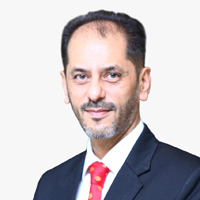Some Indian schools and regional governments are moving one step ahead in using security solutions for purposes beyond security. In this article, we take a look at both these aspects.
In recent years, many Indian schools have installed surveillance cameras in their premises. The Indian Central Government’s board of education frequently issues circulars to its schools to keep their security measures up-to-date, which include the use of cameras and access control.
Although there are several schools in the country, especially in tier two and three cities, that are yet to achieve ideal security levels, most managements have accepted the need for surveillance cameras. But this is mainly because of regulatory requirements and not because of a clear understanding of the security threats.
In a lot of instances, when school authorities ask security service providers for protective solutions, the latter has to figure out the major threats and how to install solutions that counter them. This becomes a challenge, depending on the location of the school and the diverse nature of Indian regional regulations.
But interestingly, some schools and regional governments are moving one step ahead in using security solutions for purposes beyond security. In this article, we take a look at both these aspects.
Major security concerns in Indian schools
 Kunal Bhogal
Kunal Bhogal
Chief Design Officer
IRIS Consulting
Education institutions in the U.S. are often in the news for
gun-related security incidents. The U.S. also receives much criticism for its lax gun-control laws. But what many people don’t know is that India has the greatest number of unlicensed, indigenously-made guns in the world, according to Kunal Bhogal, Chief Design Officer at
IRIS Consulting. Referred to as “Katta”, these guns find their way to some of the educational institutions in the country and pose a major security threat to students and teachers.
Bhogal, who has been part of auditing security at hundreds of schools across the country, says that there is a significant proliferation of locally-made guns in the higher education institutions in the country. But this is not the only concern.
“Another menace that has been hurting the education sector in India is drugs,” Bhogal added. “The manufacturing process of narcotics has become easier in recent years, and this, in turn, has made it easier for drug pushers to make their products available at every nook and corner. Juveniles are one of the most vulnerable categories when it comes to trying out drugs and hence drug pushers focus on schools and colleges.”
Besides such issues that affect the students, schools also have to deal with the issue of pilferage. This impacts seemingly inexpensive things like old furniture to expensive lab equipment. Surveillance systems and perimeter security systems are integral to dealing with this issue.
The rising popularity of certain advanced solutions
 Sandeep Patil
Sandeep Patil
Founder
Securizen
Sandeep Patil, Founder of the systems integration company
Securizen, spoke about a recent project for a private school that they had taken up.
“The security began at the entrance where people who came to pick up the children had to authenticate their vehicles with RFID and authenticate themselves with a
face recognition system,” Patil said. “Then came the issue of school buses. Usually, we recommended mobile DVRs for school buses, but since the cost was a concern for the customer, we made use of IP cameras and a regular NVR with solid-state hard disk drives. Then, of course, there is the monitoring of classrooms and surrounding areas like corridors and playgrounds with surveillance cameras, which have become very common these days.”
Patil added that besides these, an interesting development is the use of facial recognition for marking attendance of students. Many customers appear to be interested in the convenience this system offers.
Projects beyond security in schools
 Sanjeev Sehgal
Sanjeev Sehgal
Founder and MD
Sparsh
The Delhi government had recently announced that they would install video surveillance cameras in all public schools in the city and provide real-time footage access through apps to parents. Although met with mixed reactions from the public, the government implemented a pilot project, which monitored the performance of teachers using cameras and software.
“The project was Teacher Quality Education Assessment System,” explained Sanjeev Sehgal, Founder and MD of
Sparsh, who was part of this project from the beginning. “The purpose of the project was to install video surveillance cameras in the classroom to monitor the activities going on in the classroom, know the performance quality of a teacher, what they were doing, and how the kids were responding to it.”
They installed two cameras in each classroom, one facing the students and the other facing the teacher. There would be a microphone and speaker installed in the classroom as well, through which the principal could communicate with the class if necessary. Before entering the classrooms, the teachers had to authenticate themselves with a fingerprint-based biometric system. This ensured that a teacher scheduled for a particular hour was present in the class.
The process didn’t stop there. The recording of each class was saved as a separate file, with the details of the teacher, class, subject, and school. At the end of the week, the software automatically selected two teachers and two lectures from these two teachers, ensuring all teachers were given an equal amount of time during a given timeframe. The system then sent these files to the control room of the Department of Education of the Delhi government.
At the Department of Education, assessors examined these videos along with the audio. The system of auditing also was systematic, designed to minimize any subjective influence.
“We had also provided an audit software,” Sehgal continued. “The software had two windows which would play video from each of the two cameras in a classroom. The video would be played for four minutes, after which the software would ask four questions to the auditors. Once they had answered all such questions within a video, the footage would be played again, with another set of questions. This was how the whole lecture was audited.”
After the audit, rating points for each answer would be given, from which a total rating point for the teacher would be generated. At the end of the month, the teacher was compared with other teachers within the same school, within the same district, and within the same state. The authorities could use these rating points as criteria for giving incentives to teachers.
Sehgal added that they were seeing interest from other state governments and private schools as well for this. The state of Odisha in the eastern part of the country is an example. Given the in-depth nature of the process and its results, other governments could follow suit.
Where’s the opportunity in this vertical?
As more and more schools and education authorities seek to use surveillance devices for security and beyond, the market is ripe for solutions with features like facial recognition. Sehgal pointed out that analog is finally making its way out of the market and IP is becoming a necessity, so solution providers in this domain may find this attractive. Of course, understanding the price-competitive nature of the Indian market is crucial to surviving here, but as many large firms have already proven, the returns are worth the efforts.